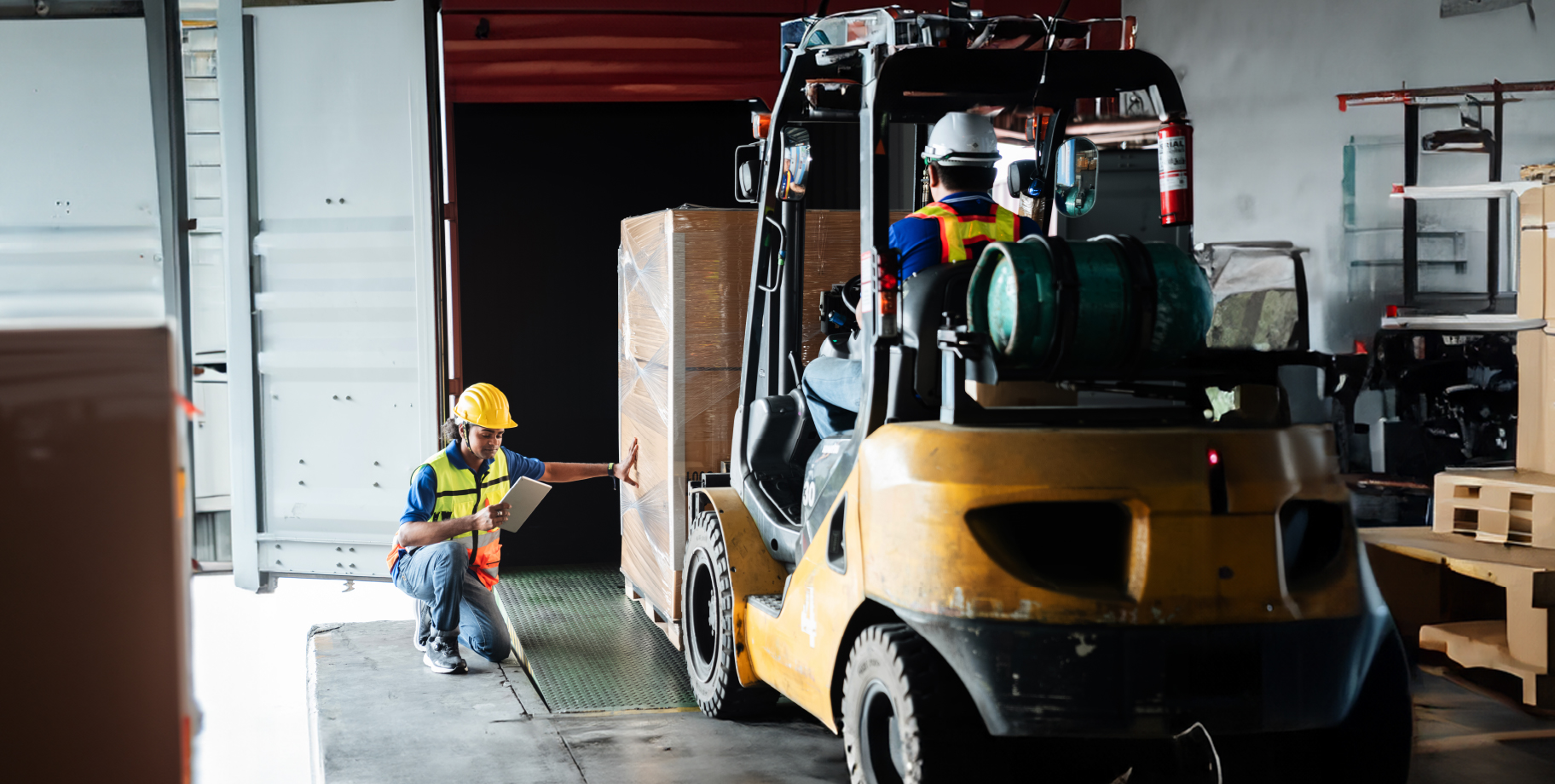Is Intermodal Freight Shipping Right for Your Supply Chain?
Nov 05, 2024
Is Intermodal Freight Shipping Right for Your Supply Chain?
In today’s fast-paced world of global commerce, efficiency is key. That’s where intermodal freight shipping comes in, transforming how we move goods across continents and oceans. But what exactly is this logistics powerhouse, and why should you care? Let’s dive in and explore the world of intermodal freight shipping.
What is Intermodal Freight Shipping?
Intermodal freight shipping is like a well-choreographed dance of transportation modes. It involves moving cargo in the same container or vehicle using multiple forms of transportation – think trucks, trains, ships and even planes – while keeping the freight on the same pallet or how it was originally packed when changing modes. This seamless transition between transport types is what sets intermodal shipping apart.
Historically, cargo was often unloaded and reloaded when switching between transport modes, leading to inefficiencies and increased risk of damage. The introduction of standardized shipping containers in the 1950s revolutionized the industry, paving the way for modern intermodal freight shipping.
Advantages of Intermodal Freight
Cost-Effectiveness
- Economies of Scale: Intermodal freight shipping excels in leveraging economies of scale by integrating different modes of transport for maximum cost efficiency. By seamlessly transitioning between trucks, trains, ships and planes, intermodal shipping optimizes each leg of the journey, resulting in reduced overall transportation costs.
- Reduced Handling Costs: One of the key cost-saving advantages of intermodal freight shipping is the reduction in handling costs. With cargo staying within the same container or pallet throughout its journey, there is minimal need for labor-intensive loading and unloading processes. This not only lowers labor costs but also decreases the risk of any damage occurring during handling, leading to potential savings in insurance and maintenance expenses.
Environmental Benefits
- Lower Carbon Footprint: Incorporating rail transport for long-distance shipping plays a pivotal role in reducing the environmental impact of freight transportation. Unlike long-haul trucking, rail transport produces significantly lower CO2 emissions per ton-mile, contributing to a more sustainable and environmentally conscious logistics framework.
- Reduced Road Congestion: Intermodal freight shipping aids in reducing road congestion by diverting a portion of long-haul freight from the highways to the rails. This also creates a positive ripple effect by decreasing traffic, mitigating the wear and tear on road infrastructure and ultimately contributing to a more efficient and environmentally friendly transportation ecosystem.
Enhanced Security
- Reduced Risk of Theft and Damage: The use of standardized shipping containers in intermodal freight shipping significantly reduces the risk of theft and damage. These containers remain sealed throughout the entire transportation process, minimizing opportunities for unauthorized access or tampering, thus providing an added layer of security for the cargo.
- Improved Tracking and Visibility: Advanced tracking systems and real-time monitoring technologies enhance the security aspect of intermodal freight shipping. By providing comprehensive visibility into the location and condition of the cargo throughout its journey, shippers and logistics providers can proactively address any potential issues, ensuring a secure and transparent shipping process.
Global Reach
- Seamless International Shipping: Intermodal as it relates to shipping containers offers a seamless transition across international borders, enabling efficient and uninterrupted movement of cargo between countries and continents. This smooth interconnectivity between various modes of transport facilitates the globalization of supply chains, allowing businesses to efficiently manage their international trade operations.
- Simplified Customs Processes: Standardization and containerization in intermodal freight shipping streamlines the customs clearance process for international shipments. Uniform documentation and procedures simplify cross-border transactions, reducing bureaucratic hurdles and ensuring a more expeditious flow of goods across different jurisdictions.
The Other Side of the Coin: Disadvantages to Consider
While intermodal freight shipping presents a multitude of benefits, it’s crucial to acknowledge and address the potential drawbacks that come with this mode of transportation:
Potential for Delays
- Transfer Points as Bottlenecks: Intermodal freight shipping involves the transfer of goods between different modes of transport at designated terminals or facilities. These transfer points can sometimes become bottlenecks if not managed efficiently. Delays at transfer points can result from coordination issues, congestion or operational inefficiencies, highlighting the need for robust logistics planning and execution.
- Weather-Related Disruptions: Weather conditions can have a significant impact on intermodal freight operations, affecting multiple modes of transport simultaneously. Adverse weather events such as storms, snowfall or extreme temperatures can cause delays, cancellations or route diversions, disrupting the smooth flow of goods and potentially leading to logistical challenges for shippers. The susceptibility of intermodal freight to weather-related disruptions underscores the importance of contingency planning and risk mitigation strategies.
Limited Access
- Dependence on Existing Infrastructure: Intermodal freight shipping relies heavily on the availability and quality of rail and port infrastructure in specific regions. In areas where rail or port connections are limited, underdeveloped or insufficiently equipped to handle intermodal cargo volumes, businesses may face challenges in accessing intermodal shipping options. The reliance on existing infrastructure constraints in certain regions can restrict the flexibility and feasibility of utilizing intermodal transportation, potentially limiting supply chain optimization opportunities.
Complexity
- Coordinating Stakeholders: The complexity of intermodal freight shipping lies in coordinating multiple stakeholders, including carriers, terminals, customs authorities and other service providers, to ensure seamless transitions between different modes of transport. Effective coordination and communication among these diverse entities are essential for the successful execution of intermodal shipping operations. Delays, miscommunications or breakdowns in coordination can lead to operational disruptions, increased costs and potential service quality issues, underscoring the need for robust management practices and standardized processes.
- Managing Multiple Modes: Integrating diverse modes of transport into intermodal shipping introduces a level of complexity in managing the intricacies of each mode’s requirements, regulations, and operational nuances. Navigating the distinct procedures, regulations and technologies associated with road, rail, maritime and air transport can pose challenges for logistics professionals, necessitating specialized expertise and meticulous planning to orchestrate smooth and efficient intermodal freight movements.
When to Embrace Intermodal Freight
Intermodal freight shipping emerges as the preferred choice in certain scenarios where its advantages are most pronounced and beneficial:
Long-Distance Shipments
- Cost-Effectiveness Over 500 Miles: One of the key strengths of intermodal freight shipping is its cost-effectiveness over long distances, particularly for journeys surpassing 500 miles. As the distance increases, the economies of scale inherent in intermodal transportation models start to outweigh the costs associated with relying solely on trucking services. By leveraging the efficiency of multiple transport modes and optimizing routing choices, businesses can achieve cost savings and enhanced value propositions for shipments traveling extended distances.
- Reduced Fuel and Operational Costs: Intermodal freight transportation offers significant fuel savings and operational efficiencies for long-haul journeys compared to traditional trucking services. By shifting a substantial portion of the transportation burden to rail or maritime modes over extended distances, businesses can benefit from lower fuel consumption, decreased wear and tear on trucks and reduced labor expenses, contributing to overall cost reductions and competitive pricing advantages.
High-Volume Cargo
- Optimal for Consistent, Large Shipments: Intermodal freight shipping is well-suited for handling high-volume cargo shipments that require regular, reliable transportation services. Businesses dealing with substantial cargo volumes on a consistent basis can leverage the efficiency and capacity advantages of intermodal transport to streamline operations, optimize supply chain flows and achieve cost efficiencies through bulk movements.
- Capacity Utilization Benefits: Intermodal shipping enables businesses to maximize the utilization of available container space and handling capacities, especially for high-volume cargo shipments. By consolidating multiple shipments into larger container loads and leveraging shared transportation resources efficiently, businesses can achieve economies of scale, minimize empty container movements and lower per-unit transportation costs for bulk cargo shipments.
While intermodal freight shipping offers compelling advantages in terms of cost-effectiveness, environmental sustainability, security and global reach, you must carefully evaluate and address the potential disadvantages associated with operational complexities, infrastructure limitations and logistical challenges.
Intermodal freight shipping shines brightest when utilized for long-distance shipments exceeding 500 miles and high-volume cargo scenarios where economies of scale, cost efficiencies, and capacity optimization play a pivotal role in driving operational excellence and competitive advantages.
By strategically embracing intermodal transportation in these specific scenarios, and leaning on a strategic partner like NTG that has the expertise and network to keep the supply chain moving, businesses can harness the full potential of integrated multimodal solutions to enhance supply chain performance, cost-effectiveness and customer satisfaction levels while unlocking new opportunities for growth and expansion in today’s dynamic logistics landscape.
Recent Posts

Stay in the Know: Carrier Trends & Market Updates

How to Lower Your LTL Shipping Expenses

NTG Honors Truck Drivers During NTDAW 2025

